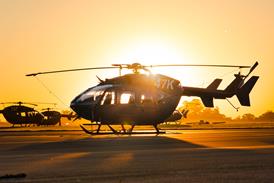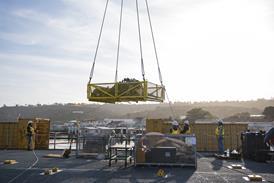AlliedSignal has refuted claims by Beriev that it is responsible for new delays to the maiden flight of its Be-200 twin-turbofan amphibian. The Russian company had alleged that non-arrival of avionics from AlliedSignal, coupled with funding shortages, had stopped the aircraft making its first flight.
The absence of the Be-200 was a major disappointment at a generally lacklustre Hydroaviation show at Gelendzhik on Russia's Black Sea coast from 30 June to 5 July.
The Tagenrog-based manufacturer, which is part of Sukhoi Aviation-Military Industrial Complex, has been plagued with funding difficulties. The prototype Be-200 was rolled out in September 1996 and was scheduled to make its maiden flight the following year. It took until August 1997 for the partners to obtain the finance just to pay for the Progress D-436TP turbofans - and the financial pressures do not appear to have eased.
"The money difficulties our industry is experiencing have caused substantial delays to our programme," says Beriev's general designer, Gennadi Panatov. "We had expected to achieve a first flight in May but we are still awaiting delivery of the systems from AlliedSignal. If we had received the system even by early June, the Be-200 would have flown at the show."
AlliedSignal hit back saying it had delivered the digital avionics to the Russian consortium which is developing the Aria 200 integrated avionics suite for the aircraft.
"We are not responsible for the non-appearance of the Be-200 at the show," says the company.
Despite the non-appearance of the multi-role amphibian, the show played host to three other members of Beriev's line-up.
The modernised Be-128, dubbed the Be-12P-200, is acting as a testbed for the Be-200 avionics and was also demonstrated as a water bomber. Two Be-12Ps are already involved in firefighting in Siberia and Beriev reckons there are about 160 aircraft that could be modified to the new role.An A-40 twinjet was also on show while the Be-103 piston twin made its show debut.
Source: Flight International























